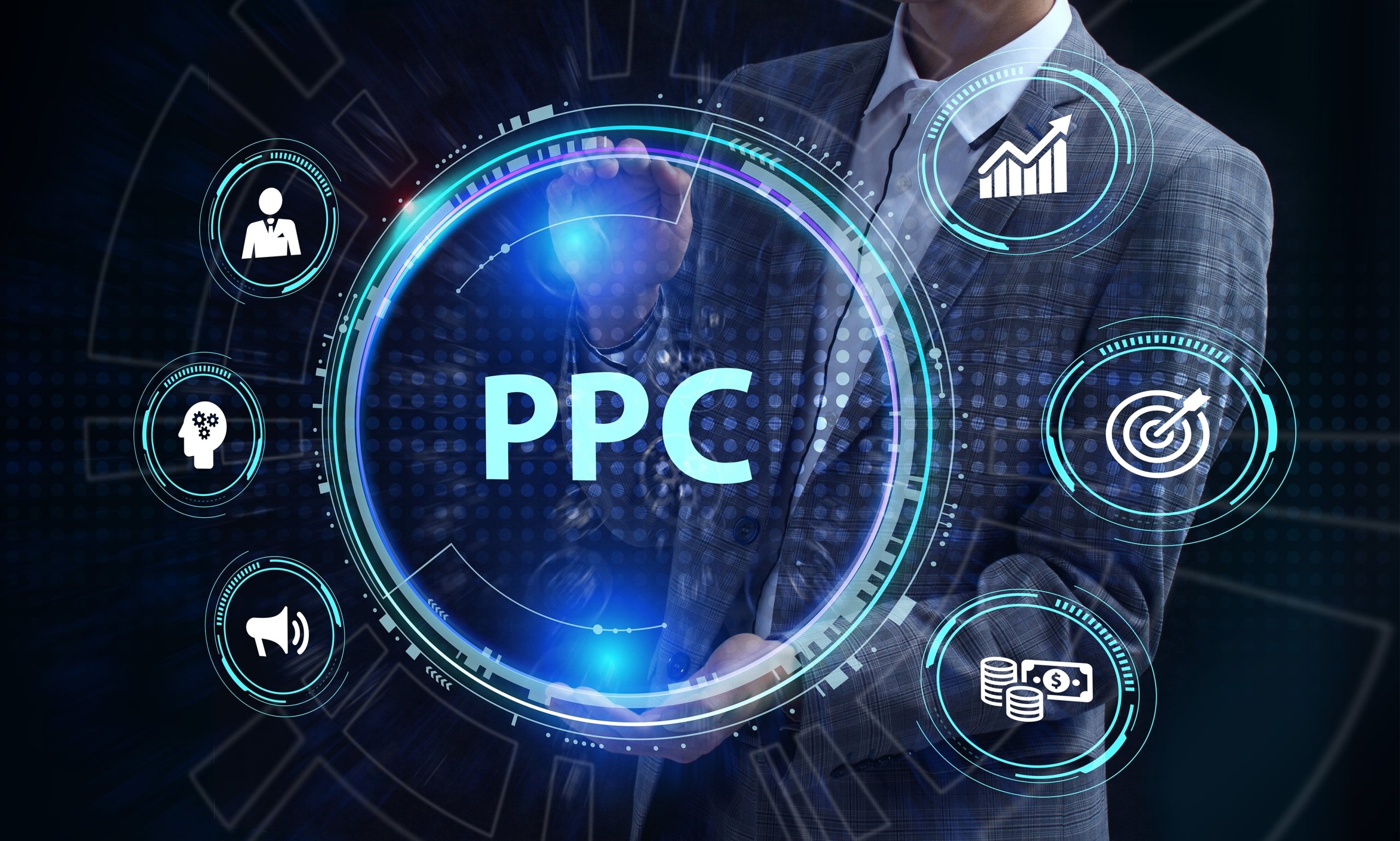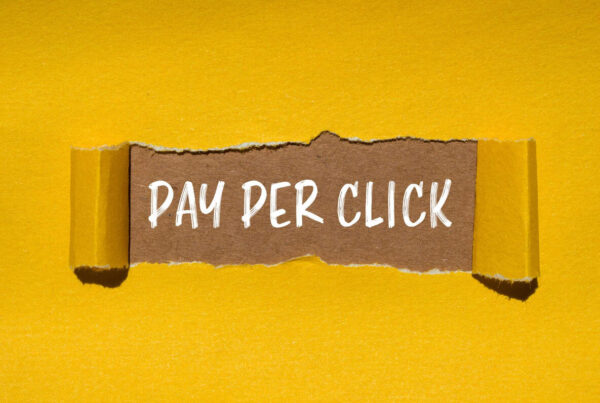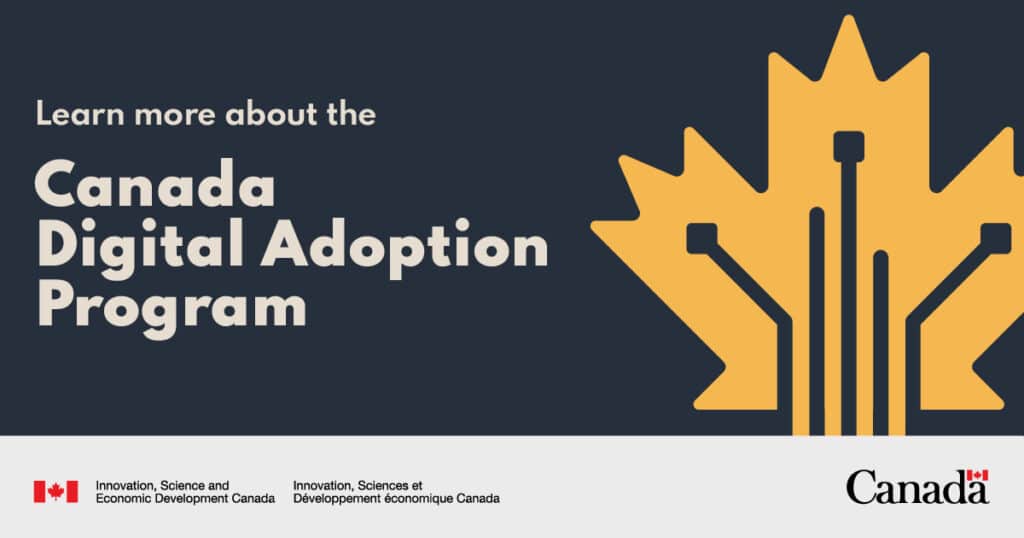PPC advertising is constantly changing and small business owners face the daunting task of navigating the landscape, with countless competitors vying for attention in the digital marketplace, it’s crucial to establish a strong online presence. Without a well executed PPC strategy for your paid ads, your brand may get lost in the noise. To truly succeed, it’s essential to harness the power of all aspects of PPC advertising, creating a unique and impactful presence that not only grabs attention but also delivers tangible results. By investing in a strategic PPC approach, you can ensure that your marketing efforts align with your business goals and generate a significant return on investment.
Below is the ultimate guide with tips and tricks to ensure overall automation and success for all your PPC campaigns.
Keyword Strategy Overhaul
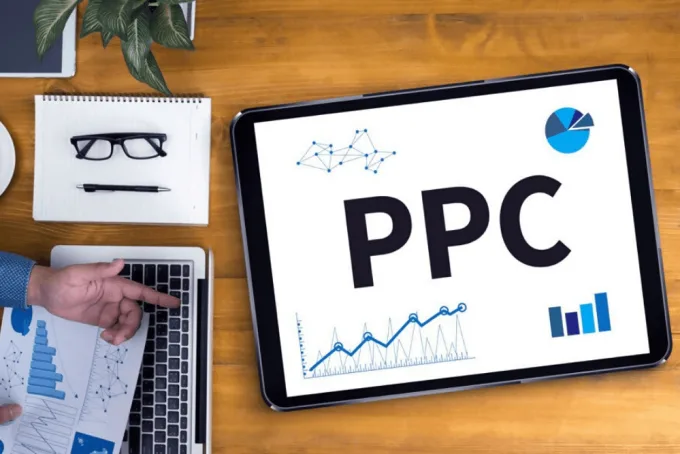 When it comes to revamping your keyword strategy, a meticulous approach is essential. It’s important to capture the essence of your brand while also targeting the intentions of your audience, which requires a deep dive into analytics to identify underperforming keywords and eliminate those that are draining resources without yielding sufficient returns. By focusing on what truly resonates with potential clients, you can streamline your campaigns for maximum efficiency.
When it comes to revamping your keyword strategy, a meticulous approach is essential. It’s important to capture the essence of your brand while also targeting the intentions of your audience, which requires a deep dive into analytics to identify underperforming keywords and eliminate those that are draining resources without yielding sufficient returns. By focusing on what truly resonates with potential clients, you can streamline your campaigns for maximum efficiency.
In developing your revised keyword plan, it’s important to consider the ever changing search landscape. This means staying informed about trends and seasonality that could guide your campaigns towards more fruitful engagements. Striking the right balance between broad reach and precise targeting is key, as it allows you to tailor your approach to the unique aspects of your market niche.
Identify Niche Long Tail Keywords
Precision is often the key to profitability, especially when it comes to implementing long tail keyword strategies.
By focusing on niche long tail keywords, you can increase the relevance of your ads and connect with consumers at the exact moment of their intent. This not only reduces competition but also enhances click through rates.
Mastering the art of long tail keywords requires a keen eye for niche market terms, by blending searcher intent with commercial viability to attract qualified traffic that is ready to convert.
When you incorporate long tail keywords into your campaigns, you sharpen your targeting, allowing you to hone in on specific needs and queries, improving the efficiency of your ad spend while increasing your chances of conversion.
Utilize Research Tools
Keyword discovery plays a vital role in achieving PPC success.
By using platforms like Google Keyword Planner or SEMrush, marketers can uncover a wide range of keywords that resonate with their target audience. This includes not only the commonly used terms but also the highly effective, yet less obvious, long tail variants. Additionally, leveraging these tools helps identify emerging trends and seasonal keywords, providing valuable insights to stay ahead of the competition.
Avoid falling into the common pitfalls of neglecting keyword research.
When selecting keywords, it’s important to strike a balance between a combination of commonly used terms and niche specific terms to create a robust campaign that caters to both reach and specificity. By utilizing these research tools, you can ensure that you’re not overlooking any potential keyword goldmines that could drive targeted traffic to your offerings.
Make data-driven decisions with precision and confidence.
The use of advanced keyword research tools enables informed decision making, equipping marketers with relevant data to make strategic adjustments. By prioritizing based on performance data from Q3 2023 research, you can allocate your budget and effort to the highest yielding keywords for 2024. This data driven approach eliminates guesswork, streamlines campaign structure, and maximizes the effectiveness of every dollar spent in your PPC campaigns.
Negative Keywords
Negative keywords play a crucial role in PPC marketing but are often overlooked, by advertisers when refining their targeting and optimizing campaign performance. These are specific keywords or phrases that are intentionally excluded from triggering an ad to be shown. By identifying and adding negative keywords to their campaigns, advertisers can prevent their ads from appearing in irrelevant search queries, thereby reducing wasted ad spend and improving the overall quality and relevance of their ad impressions. Negative keywords allow advertisers to focus their budget and resources on reaching the most relevant audience, ensuring that their ads are displayed to users who are more likely to convert. This strategic use of negative keywords helps to increase click through rates, improve ad visibility, and ultimately drive better results in PPC marketing campaigns.
Ad Copy That Converts
Crafting compelling ad copy is a skill that resembles mastering a fine art where every word must have the power to captivate and persuade. To boost conversions, it’s crucial to clearly and precisely communicate your unique selling propositions, making them the focal point of your message. You need to be skilled at drafting a consistent combination of words that not only resonates with your target audience but also compels them to take action. This requires seamlessly blending the narrative of your offering with an irresistible call to action. It is through this careful balance of persuasive language and strategic positioning that you can turn casual browsers into enthusiastic buyers, driving the success of your PPC campaigns.
Compelling Headlines
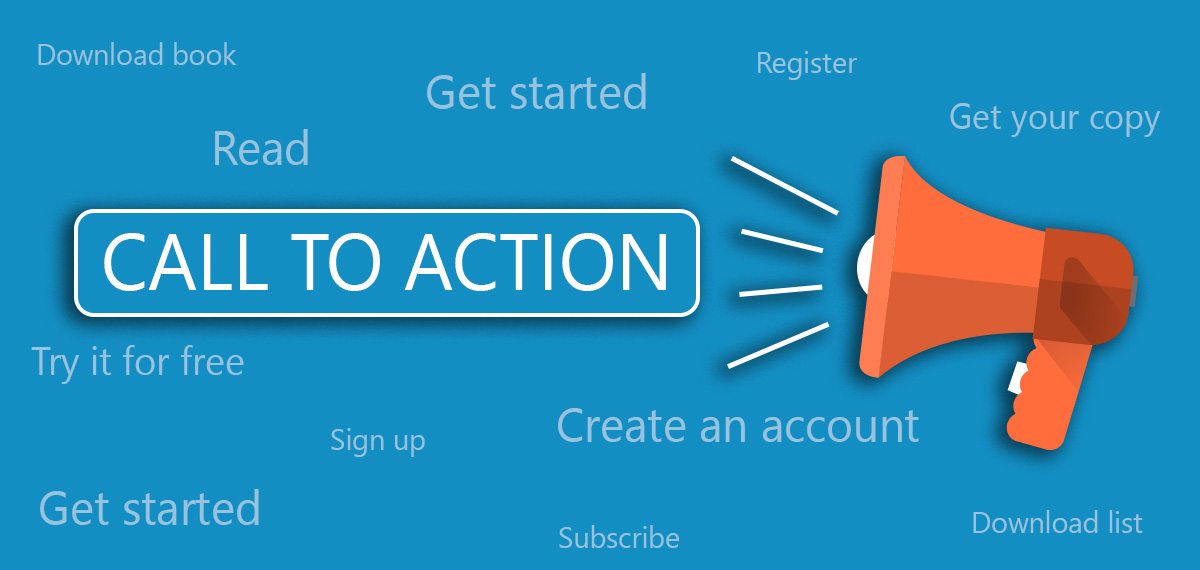 Headlines serve as the cornerstone of engagement in your PPC campaigns, compelling users to click through and discover more.
Headlines serve as the cornerstone of engagement in your PPC campaigns, compelling users to click through and discover more.
-
- Incorporate Numbers & Statistics: Facts and figures pique curiosity and lend credibility.
- Pose a Question: Engage users by prompting them with questions that resonate.
- Use Emotional Triggers: Words that evoke emotion can drive people to take action.
- Highlight Unique Selling Points (USPs): Clearly state what sets your offer apart.
- Create a Sense of Urgency: Limited time offers can encourage immediate response.
Headlines should always align with the searched query to maintain relevance and ensure Quality Score efficiency.
Craft each headline with the user’s intent in mind, optimizing for maximum impact and conversion potential.
Unique Selling Points
Identifying and articulating your Unique Selling Points (USPs) are essential to distinguishing your brand in a crowded marketplace. Your USPs should encapsulate the unique benefits and value proposition of your offerings, compellingly presented in your PPC ads.
Your USPs sets you apart, by encapsulating what makes your product or service superior to those of your competitors. Convey this uniqueness effectively to spark interest and convince potential customers to learn more about your offerings.
Incorporate your USPs in ad copy strategically, by using them to highlight specific features, benefits, or outcomes associated with your product or service that directly address the needs and desires of your target audience.
Remember to integrate your USPs into every aspect of your campaign. They should be evident across ad copy, images, and landing pages, creating a cohesive narrative that reinforces your competitive advantage in the minds of consumers.
Crafting messages that clearly demonstrate how you can solve a problem or fulfill a need is essential to position your products or services as the ideal solution by illustrating how your USPs make a tangible difference in the customer’s life.
Ultimately, your USPs are the reason why a customer should choose your brand. They drive home your market position and tune the persuasive pitch of your PPC campaigns to resonate with the intended audience, converting clicks into loyal customers.
Strong Calls to Action
Vigorous calls to action (CTAs) are not just beneficial, they’re necessary for converting interest into action.
- Assert Command: Begin with a strong verb that prompts immediate response, such as “Buy”, “Call”, or “Subscribe”.
- Create Urgency: Use time sensitive language like “Now”, “Today”, or “Limited Offer” to instigate action.
- Emphasize Value: Make the benefit crystal clear, for instance, “Get Your Free Quote” or “Save 20% Today”.
- Stand Out: Ensure the CTA is visually prominent and impossible to miss on your landing page.
- Keep It Simple: A CTA should be straightforward and easy to understand at a glance.
CTAs should be the focal point of your ad, impossible for viewers to overlook.
Optimizing your CTAs can be the difference between an ad that gains interest and one that generates conversions.
Extensions for Enhanced Ads
Using the full potential of ad extensions is like equipping your advertisements with additional tools and resources. By incorporating site link extensions, callout extensions, and structured snippets, you can enhance the information provided in your PPC ads, delivering relevant details directly to potential clients. These extensions not only enhance the appeal of your ads but also give you a competitive advantage, enticing users to engage more deeply with your campaigns.
Each extension serves as an additional channel for sharing information, offering unique insights into different aspects of your service or product. By effectively leveraging these extensions, your ads can enjoy increased visibility, resulting in enhanced user experiences and ultimately driving a higher conversion rate.
Informative Site Links
Site links are invaluable tools that play a crucial role in guiding users directly to relevant pages on your website. By bypassing the homepage and providing immediate access to specific information, these deep links offer a tailored and efficient navigational experience. Site link extensions serve as a powerful enhancement to your PPC strategy, expanding the real estate of your ads on search engine results pages.
With just one click, users can access distinct parts of your business offerings, enhancing the efficiency of their customer journey. By incorporating site links into your ads, you can reduce bounce rates and increase engagement by swiftly connecting users with the information they are seeking.
Furthermore, these clickable additions provide users with diverse options for interaction, allowing them to directly reach the desired service or page. This increases the likelihood of conversions and enhances the overall effectiveness of your PPC campaigns.
To create an effective site link strategy, it is important to use concise and compelling wording that clearly communicates the value proposition of your linked content, maintaining clarity to ensure a seamless user experience and foster trust.
Monitoring the performance metrics of your site links is essential. Marketers should analyze click through rates and conversion data associated with each link, making adjustments to optimize for the most impactful combination.
Ultimately, the goal is to create seamless paths that guide users from curiosity to becoming customers, and by incorporating informative site links into your PPC campaigns, you can create pathways that direct targeted traffic to strategic areas of your business website.
Snippets That Structure
Structured snippets play a big role in enhancing the relevance of your ads.
When incorporating structured snippets into your PPC strategy, you gain a multifaceted advantage by providing a concise overview of the specific attributes, services, or product categories that your business offers. This not only gives potential customers a clearer understanding of what to expect but also allows you to segment and prioritize your highlights based on their performance.
Snippets add a layer of clarity to your service offerings, helping users better grasp the breadth of what you provide. Selecting the right snippet requires insight and precision, as a well tailored snippet can effectively guide users closer to the decision point.
Continuous refinement of your structured snippets is essential, as market trends shift and consumer preferences evolve, it becomes imperative to adjust your snippets accordingly. By staying informed about changing demands and aligning your structured snippets with the latest industry practices, you can ensure maximum relevance and engagement. Your careful attention to detail in monitoring and optimizing these snippets will ultimately deliver enduring value to your PPC campaigns.
Landing Page Effectiveness
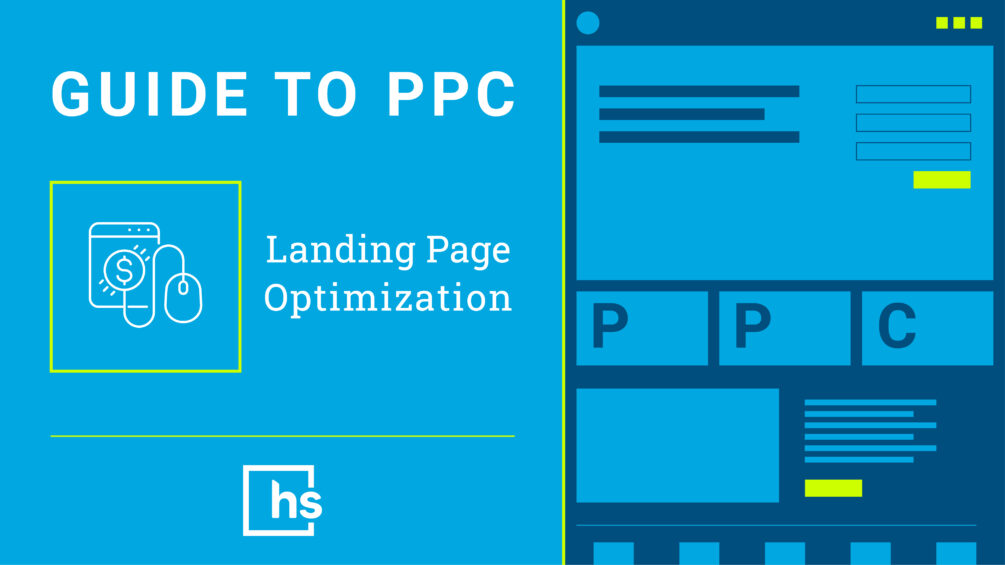 The art of creating an effective landing page is essential for the success of any PPC campaign. The seamless connection between your ads and landing pages is of utmost importance, it is this alignment that creates a smooth and compelling path for potential customers, enticing them to take the desired action. Your landing page should be perfectly crafted to reflect the promise made in the ad, providing a captivating and coherent narrative that simplifies the journey towards conversion. Remember, the landing page is where the magic happens, where prospects transform into customers, therefore, optimizing your landing page is crucial for elevating your PPC game.
The art of creating an effective landing page is essential for the success of any PPC campaign. The seamless connection between your ads and landing pages is of utmost importance, it is this alignment that creates a smooth and compelling path for potential customers, enticing them to take the desired action. Your landing page should be perfectly crafted to reflect the promise made in the ad, providing a captivating and coherent narrative that simplifies the journey towards conversion. Remember, the landing page is where the magic happens, where prospects transform into customers, therefore, optimizing your landing page is crucial for elevating your PPC game.
Aligning with Ads
Ensuring consistency between your PPC ads and landing pages is also important for enhancing user experience and boosting conversion rates. When your message and design align seamlessly, it creates a smooth transition for users, directly impacting the success of your campaigns.
Alignment goes beyond visual appearance, it encompasses tone, messaging, and user intent and plays a fundamental role in optimizing the user journey.
Maintaining a consistent narrative across all your PPC touchpoints is essential for building user trust and driving engagement. By delivering a landing page that fulfills the expectations set by your ad, you create a seamless path to conversion.
As you refine your PPC strategy, remember that alignment is not a one time task, it requires continuous fine tuning to adapt to evolving consumer behavior and market trends. By adopting a dynamic approach to aligning your ads and landing pages, you position your campaigns to effectively capture and engage your target audience, resulting in higher conversion rates and a stronger return on investment. In essence, view alignment as the “golden thread” that weaves through your entire PPC strategy.
Quick Loading Optimization
Optimizing for quick loading times is important for maintaining user interest and reducing bounce rates.
- Minimize HTTP requests by simplifying the design and minimizing the use of script and image files.
- Enable compression on your web server to reduce the size of your CSS, HTML, and JavaScript files.
- Leverage browser caching to store elements of your site on a user’s browser, speeding up subsequent visits.
- Improve server response time by looking for performance bottlenecks like slow database queries, slow routing, or a lack of adequate memory.
- Use a content delivery network (CDN) to distribute your content across multiple servers, allowing users to download data from servers closest to them.
- Optimize images by ensuring they’re not larger than necessary, are in the right file format, and are compressed for the web.
Speed should be a priority, influencing everything from user experience to AdWords Quality Score.
Incorporating these steps will contribute to a swifter site, gracefully ushering users from ad click to conversion.
Timing for Optimal Exposure
Strategically timing your PPC campaigns is imperative for maximizing impressions and engagements. By carefully scheduling your ads, you can ensure they appear when potential customers are actively searching for your offerings. Understanding your audience’s online activity patterns is not just beneficial, but essential for optimizing ad exposure and getting the most out of your advertising budget.
Leveraging data analytics is key to mastering the timing of your ads. By analyzing trends and identifying peak traffic periods, you can strategically schedule your PPC campaigns during these high volume times. This focused approach allows you to concentrate your resources, ensuring that your ads reach the right audience at the most opportune moments, this in turn, leads to increased click through rates and improved conversion potential.
Prime Time Identification
Pinpointing the optimal periods for ad placements should always be part of your PPC strategy, which involves identifying when your audience’s interest is at its peak and they are most receptive to your message.
By analyzing user engagement data, you can uncover patterns and determine the times when potential customers are actively searching for your services or products. This window of heightened activity becomes your prime time for ad exposure.
Using tools like Google Analytics allows you to examine traffic flows and understand user behavior. Armed with these valuable insights, you can strategically schedule your ads to coincide with these peak periods, maximizing your reach and impact.
It’s important to note that prime time is not static, it evolves with market trends, seasons, and changes in consumer habits. Staying vigilant and adapting to these shifts ensures that your PPC strategies remain agile and effective.
Neglecting to consider prime time paid ads can result in diminished PPC performance, but by ensuring that your ads meet your audience at the ideal moment, it will ultimately make a significant difference in the success of your campaign.
Cost Efficient Scheduling
Strategic scheduling is a vital component of optimizing your PPC campaigns and maximizing your budget. By aligning your ad runs with data driven prime times, you can effectively lower costs while still achieving impactful results.
Intelligent allocation involves finding the right balance between engagement and budget conservation and requires a meticulous approach to managing your spending.
Launching ads during non peak hours can help stretch your budget and provide visibility when competition is less intense, while potential customers may still be browsing. By carefully analyzing historical data, you can identify those opportune yet cost effective times to run your ads.
Making incremental adjustments to your ad timing, based on audience behavior and conversion insights, is crucial. By adopting a cost efficient scheduling strategy, businesses can not only minimize unnecessary spending but also increase the likelihood of reaching audiences when they are most receptive, even outside of conventional “prime time” hours.
Quality Score Fundamentals
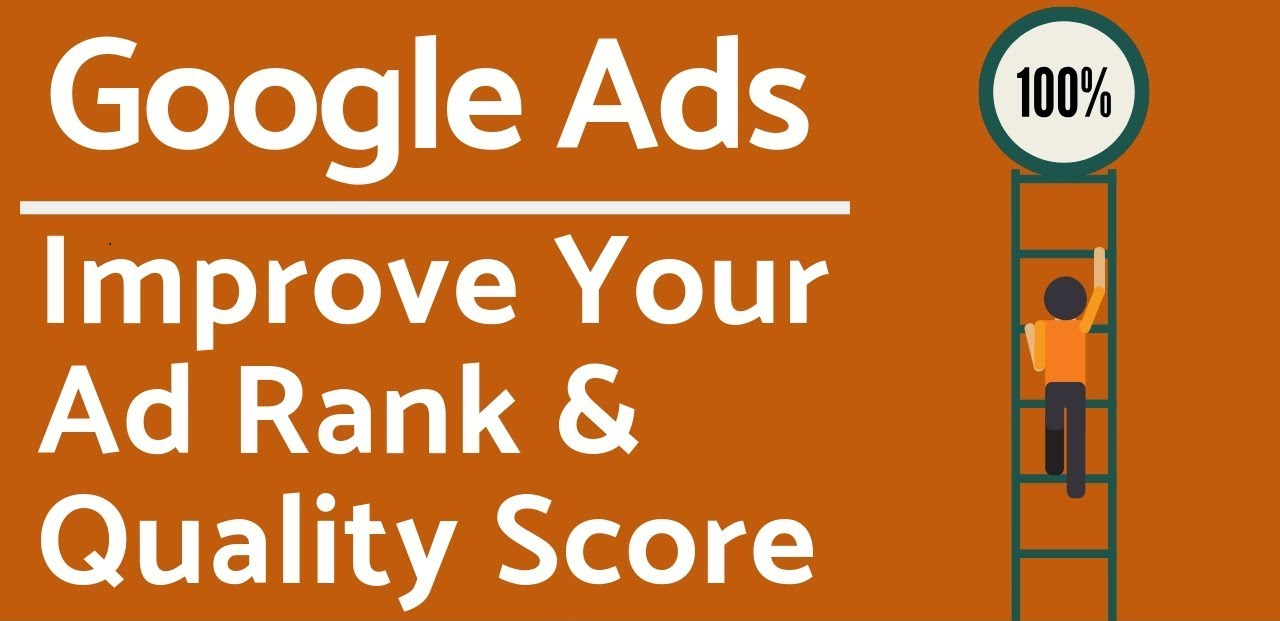 Understanding the intricacies of Quality Score is essential for optimizing your PPC campaigns. This metric reflects the interplay between keyword relevance, click through rate (CTR), and the landing page experience, serving as a valuable gauge of your ad’s performance within the auction environment of Google Ads.
Understanding the intricacies of Quality Score is essential for optimizing your PPC campaigns. This metric reflects the interplay between keyword relevance, click through rate (CTR), and the landing page experience, serving as a valuable gauge of your ad’s performance within the auction environment of Google Ads.
A high Quality Score can lead to lower cost-per-click (CPC) and better ad positioning. Mastering this metric requires ongoing efforts to refine ad relevancy, all with the goal of improving user engagement and satisfaction.
Ad Relevance Refinement
The alignment of ad content with user intent is of utmost importance in PPC campaigns. It serves as the foundation upon which Quality Scores are built.
The relevance of your ads directly impacts campaign performance metrics, making it crucial to prioritize and perfect this aspect for cost efficiency.
To enhance ad relevance, a thorough understanding of keyword intent and context is essential to ensure that each ad resonates with the searcher’s immediate needs and aligns with the semantic nuances of their query, you establish a meaningful connection that is more likely to result in conversions.
Incorporating continuous feedback loops into your campaign management process allows for continuous refinement of ad relevance. Through rigorous A/B testing of ad copy and landing pages, guided by insights from engagement metrics, you can navigate towards incremental improvement. This approach is like using a finely tuned compass that aligns with the magnetic field of consumer interest, bringing you closer to the optimal level of engagement with each iteration.
Landing Page Relevance
Achieving relevance between PPC ads and their respective landing pages is pivotal in enhancing user experience and conversion rates.
- Consistency in Messaging: Ensure that the headlines and primary messages on your landing page directly reflect the promises made in your PPC ads.
- Visual and Stylistic Harmony: Align the visual elements and style of your landing page with your ads to create a seamless transition for users.
- Loading Speed Optimization: Prioritize a swift loading time for your landing pages to reduce bounce rates and improve overall user satisfaction.
- Clear and Actionable CTAs: Incorporate strong calls to action that guide visitors toward the desired action without ambiguity.
- Personalized User Experience: Tailor landing page content to address specific visitor segments, providing a more personalized and relevant experience.
Landing page optimization does not stop at design, it is an ongoing process that demands continuous testing and refinement.
The symbiotic relationship between PPC paid ads and landing pages is a cornerstone of digital marketing, understand it, and you unlock the true potential of your PPC efforts.
Remarketing with Precision
Precision in remarketing goes beyond simply re-engaging past visitors, it involves strategically aligning with their unique needs and preferences. By analyzing audience behavior through analytics and past interactions, campaigns can be optimized to resurface with timely and compelling offerings, significantly increasing the chances of conversion.
To enhance the effectiveness of these campaigns, implementing a segmentation strategy can increase your ROI significantly. By creating lists based on user engagement levels, such as “high intent visitors” or “shopping cart abandoners,” you can deliver more personalized ad experiences. Additionally, dynamic remarketing can be a valuable approach, displaying products or services that visitors have previously viewed, reigniting their interest. With careful analysis and continuous refinement, remarketing becomes a powerful tool in converting casual browsers into loyal customers.
Campaign Reconnection
Strategies evolve, so must our re-engagement tactics.
Campaign reconnection requires a delicate balance of data driven insights and creative messaging. By leveraging the wealth of historical data, we can map out pathways to reignite interest and revive past conversations, as our data serves as the compass guiding our audience’s return journey.
Reconnecting with our audience is an art that requires nuance in the PPC landscape.
Analytics form the foundation of effective re-engagement, as they unveil the story hidden within user patterns. By interpreting this narrative, we can proactively address the evolving needs and preferences of our audience, ultimately crafting a more relevant and reconnection strategy that resonates with your visitors.
Through campaign reconnection, our goal is to build a bridge back to our brand. By leveraging our understanding of past behaviors, we create touchpoints that resonate, enticing visitors to complete their journey. In the highly competitive digital marketing landscape of 2024, it is crucial to masterfully craft reconnection strategies that stand out amidst the multitude of messages competing for the user’s attention.
Interaction Based Tailoring
Precision in PPC marketing is not just about reaching out, it’s about reaching out in the right way. The method, message, and timing of our approach must be carefully configured based on user interaction history, creating a personalized conversation that resonates with individual experiences.
This level of customization is crucial for maximizing impact and goes beyond demographics and delves deep into behavior driven personalization.
Effective strategies based on user interactions rely on sophisticated segmentation, tailored to specific behaviors and leveraging data such as page visits and conversion activity to fine tune messaging.
By opting for this level of precision, we ensure relevance and significantly increase the chances of converting casual browsers into active buyers, thereby maximizing the effectiveness of each PPC investment.
Remember, it’s about connecting the dots to create compelling narratives that draw users back in. This begins with analyzing their digital footprint to craft messages that speak to their unique journey and the choices they’ve made.
Ultimately, our goal is to echo users’ past experiences to shape their future decisions. By serving ads that reflect their previous interactions, we foster a sense of familiarity and trust that can greatly enhance conversion rates.
Budgeting for Performance
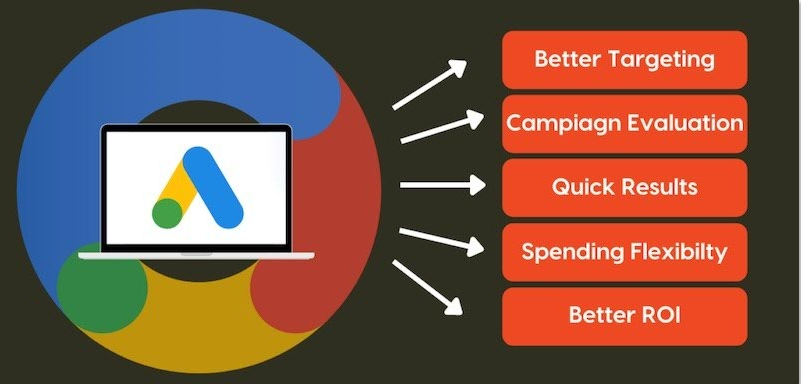 Effective allocation of funds is the linchpin to a successful PPC campaign. By carefully budgeting and matching spending to performance expectations, you can achieve a precise return on investment (ROI).
Effective allocation of funds is the linchpin to a successful PPC campaign. By carefully budgeting and matching spending to performance expectations, you can achieve a precise return on investment (ROI).
When determining how to distribute your budget, it’s important to consider the historical data and projected reach of each campaign. Focus on allocating resources to high performing keywords and ads, while reducing spending on elements that yield lower results. This recalibration is essential for optimizing your investment and maximizing returns.
Instead of solely focusing on minimizing costs, embrace a “cost effective” mindset when adjusting PPC budgets, this approach allows you to maintain a competitive edge and sustain performance without compromising your market presence.
Allocate with Finesse
Budget finesse in PPC is not solely about spending less, it involves orchestrating a symphony of budget allocation, where each element, keywords, ads, and campaigns plays a vital role. The conductor’s responsibility is to ensure a harmonious and balanced composition, one that resonates both in terms of financial performance and meaningful interactions. This may require making courageous decisions, such as reallocating resources from one area to another, in order to amplify the desired impact. This strategic approach demands thoughtful consideration and a willingness to make calculated adjustments for optimal outcomes.
Budget finesse lies in making precise adjustments, effective budget reallocation is not a one time task, it requires a dynamic approach. Continuously monitoring the performance of each campaign aspect allows you to allocate resources towards opportunities that offer the highest return, fostering sustainable business growth.
Maintaining a keen eye on trends, strategic allocation becomes essential. Budget flexibility is paramount to adapt to shifting market dynamics, embracing the fluid nature of consumer behavior and industry fluctuations. As we progress into 2024, it becomes crucial to proactively anticipate and adjust to these shifts. A stagnant budget represents a missed opportunity, while intelligent reallocation based on performance data ensures a strategic advantage in a competitive marketplace.
ROI-Focused Distribution
A ROI focused approach to budget distribution prioritizes efficiency, ensuring that every dollar spent is a strategic investment with tangible returns. By identifying high performing channels and strategically reallocating funds, businesses can amplify the performance of their campaigns.
Thoughtful budget monitoring is essential for maintaining financial prudence, enabling a systematic evaluation of investments and adjustments to drive profitability. This diligent approach to financial monitoring forms the basis of successful PPC campaigns.
Consider the impact of each budgetary decision, taking into account the insights derived from campaign data. This enables a responsive reallocation of resources that continually optimizes return on investment, a crucial practice for maintaining competitiveness in today’s digital marketplace.
Employing rigorous analytics is essential for driving optimization, so decisions should be data driven, focusing on the value derived from each conversion. This approach ensures a cost effective distribution of your marketing budget, ultimately enhancing the financial outcomes of your PPC campaigns.
Budgets must remain agile, adapting in real time to changing circumstances. The ultimate goal is to ensure that the return on investment from your PPC efforts exceeds the expenditure, and continuous analytical review enables swift adjustments, ensuring maximum yield from your PPC investments.
Insights from Competitors
Examining competing brands can offer valuable insights that can transform your PPC campaigns. By closely studying their advertising approach, including keyword selection and ad copy strategies, you can establish benchmarks for your own strategies.
Analyzing both the successes and failures of your competitors allows you to identify market trends and adjust your strategies accordingly. This includes observing bidding patterns, seasonal ad adjustments, and consumer response to their messaging, all of which can help you refine your own approach.
Embrace market insight as a competitive advantage by analyzing and applying the learnings from others’ campaigns, and you can stay ahead of the curve and ensure that your PPC efforts are not only current but also leading the way in your industry.
Strategic Gap Analysis
Recognizing the disparities between your current operations and desired performance is essential for PPC success. Conducting a strategic gap analysis serves as a diagnostic tool, ensuring that your PPC strategies align with your overarching business objectives.
When executing a strategic gap analysis, you compare ideal outcomes with actual data, pinpointing deficiencies in your PPC campaigns and identifying areas that require improvement. This process sets the stage for targeted optimization tactics.
Furthermore, gap analysis allows you to assess how your campaigns measure up against industry benchmarks. This comprehensive overview reveals where you may be falling short in capturing market share or exceeding industry expectations, providing clear guidance for corrective action.
Effectively allocating resources requires a deep understanding of these gaps. By focusing your investments on bridging these divides, you can enhance engagement, facilitate growth, and systematically elevate the effectiveness of your PPC efforts to outperform competitors.
Adopting a forward thinking approach with regular reassessment you ensure that you remain responsive to market changes and shifts in consumer behavior. Strategic gap analysis plays a pivotal role in optimizing PPC performance for sustained success.
Market Opportunity Seizing
The dynamics of PPC marketing presents abundant opportunities for growth and success where each click holds the potential for conversion. By closely monitoring and analyzing evolving digital trends, you can uncover valuable market insights that can propel you ahead of the competition. These insights serve as the catalyst for strategic interventions, allowing you to make real time adjustments to your campaigns for enhanced engagement and conversion rates.
Seize the moment with informed decision making.
Timely recognition and adaptation are vital in the world of PPC. By diligently analyzing data trends and staying attuned to market shifts, you can anticipate user intent and adjust your strategies accordingly. This ensures that your ads meet the audience’s needs precisely when and where they are actively searching.
Strategically pivot to capitalize on real time market opportunities.
Swiftly deploying test campaigns based on emerging trends or sudden market shifts can provide significant advantages as a first mover. This proactive approach opens up new avenues for growth and enables an agile marketing strategy that adapts to the ever changing digital landscape.
Maintain vigilance for emerging trends and shifts.
As we delve deeper into the digital age, continuous vigilance is necessary to seize fleeting market opportunities. Keeping a keen eye on emerging trends in 2023 will help you stay ahead of the curve for 2024. Those who skillfully incorporate insights and analytics into dynamic strategies possess a competitive edge, leveraging each click as a potential opportunity for growth.
The Testing and Refining Cycle
The testing and refining cycle is a constant driving force behind campaign success. By methodically experimenting with various ad variables, such as headlines, keywords, and bidding strategies, you can gather invaluable insights. This data forms the foundation upon which you can shape your PPC campaigns into more powerful, streamlined, and ultimately, more efficient profit generating machines. Embracing a commitment to continuous improvement through this cycle will elevate your PPC game from mere participation to a position of commanding influence.
Embrace A/B Testing
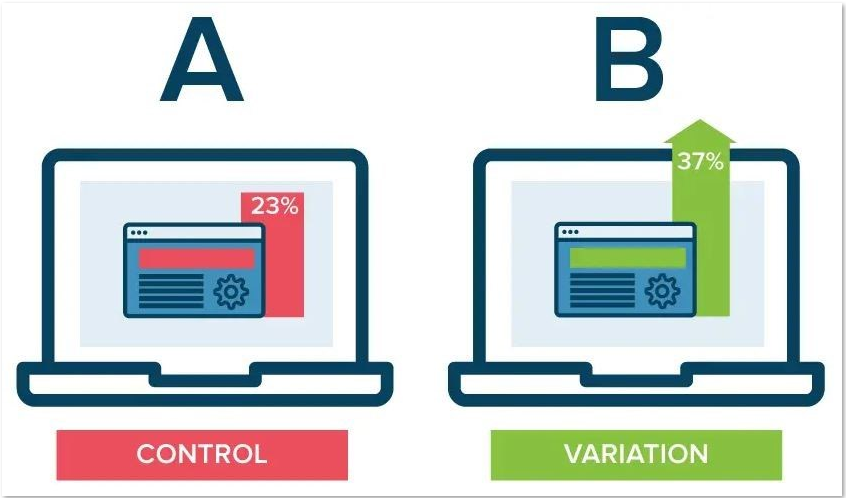 A/B testing is arguably the most important role in the process of optimizing PPC campaigns, serving as a reliable compass to guide strategic decision making. Without these controlled experiments, important data patterns may remain hidden from view.
A/B testing is arguably the most important role in the process of optimizing PPC campaigns, serving as a reliable compass to guide strategic decision making. Without these controlled experiments, important data patterns may remain hidden from view.
Strategic changes should always be driven by data and supported by empirical evidence, and A/B testing provides the necessary justification for such adjustments.
By regularly conducting A/B tests, we gain valuable insights into the effectiveness of individual campaign elements. This involves comparing two variations of a component, such as ad copy, graphics, or call-to-actions, to determine which performs better in achieving our desired objectives.
Robust A/B testing is an ongoing effort that requires patience and precision, allowing us to understand the preferences of our audience more clearly, leading us towards an optimized and refined PPC strategy that resonates with our target audience. Through each test, we make incremental progress towards encouraging clicks, fostering engagement, and achieving a higher return on investment. It’s an exercise in meticulous analysis, identifying what works and eliminating what doesn’t.
Data Driven Optimizations
Data plays a paramount role in PPC optimization.
Behind every successful PPC campaign lies a strong foundation of robust data analytics, where even seemingly insignificant metrics can reveal significant trends and insights. Data drives strategic adjustments, allowing for the fine tuning of campaigns to maximize efficiency. Continuous analysis is essential, as the digital marketplace is constantly evolving, requiring agile responses to changes in audience behavior.
Insights derived from data guide tactical shifts in campaigns.
A data centric approach ensures relevance and efficiency, by closely examining performance data and user engagement metrics, we can consistently refine targeting strategies, sharpen ad copy, and optimize keyword selection for improved relevance and cost-effectiveness.
Metrics inform strategic budget allocation.
Evaluating data trends enables precise management of budgets, empowers informed decisions on where to allocate resources, reinforcing successful campaigns and scaling back on underperforming ones. Dynamic budget allocation, driven by empirical evidence, ensures that capital is effectively utilized for optimal returns.
Accurate data analysis allows for predicting future trends.
As we navigate the complexities of PPC ecosystems, predictive analytics becomes a valuable strategic asset. The ability to forecast user behavior and anticipate market shifts, based on historical data, provides businesses with a competitive edge. It offers an informed glimpse into the potential outcomes of our PPC strategies, guiding proactive adjustments to maintain relevance and achieve ongoing success.
PPC Conclusion
In conclusion, mastering the art of PPC requires a combination of strategic thinking, data driven decision making, and continuous optimization. By implementing the top ten PPC tips outlined in this post, small business owners can elevate their PPC game and achieve their marketing goals.
From conducting thorough keyword research to leveraging ad extensions, optimizing landing pages, and embracing continuous testing and optimization, each tip contributes to a comprehensive and effective PPC strategy. By staying informed about industry trends, monitoring competitors, and allocating budgets wisely, businesses can stay ahead of the curve and maximize their ROI. With dedication, attention to detail, and a commitment to continuous improvement, small business owners can unlock the full potential of PPC and drive their businesses towards success in the ever evolving digital landscape.


